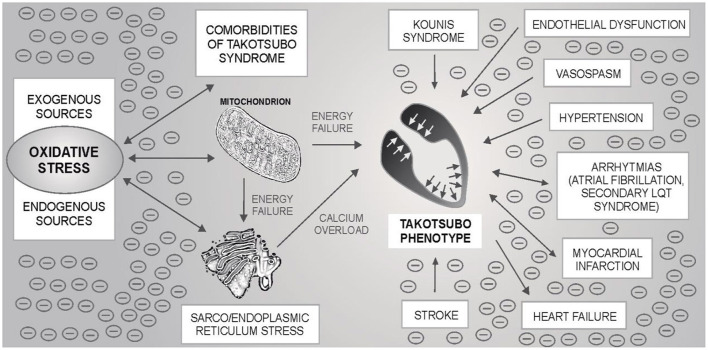Figure 2.
Possible relationship between oxidative stress (OS), mitochondria-sarco/endoplasmic reticulum complex, Takotsubo syndrome (TTS) and other cardiovascular pathologies. By the mechanisms described in the text, OS can lead to the blockade of energy production and calcium overload of myocytes with the subsequent development of an acute attack of TTS. OS is also associated with some TTS comorbidities - one of the most common is hypertension, but also e.g., atrial fibrillation. Secondary long QT syndrome and/or heart failure may be present in TTS. Stroke (ischemic or hemorrhagic) and, exceptionally, myocardial infarction have been described as the triggers of an acute TTS attack. If TTS is associated with OS, an acute attack itself can be an important source of OS. The oxidation load is likely to be potentiated. OS may affect other cardiac structures, incl. coronary (micro) circulation or cardiac conduction system. Endothelial dysfunction and vasospasm have previously been mentioned as possible pathophysiological mechanisms in TTS. Under these circumstances, an acute TTS attack could trigger an acute myocardial infarction. Kounis syndrome is an “allergic” acute coronary syndrome caused by allergic, hypersensitivity, anaphylactic or anaphylactoid conditions. There are three types of the disease: caused by a coronary artery spasm, by the acceleration of the pre-existing atherosclerotic changes in the coronary arteries, and by hypersensitivity reactions to the coronary stent material leading to “in stent” thrombosis, respectively.

